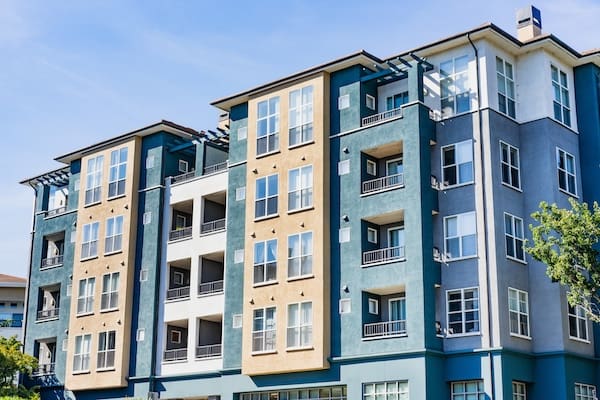
Multi-Family Housing Pest Checklist
Managing a multifamily housing complex comes with unique challenges, and one of the most critical is pest control. With multiple units and shared spaces, the risk of infestations can be high, affecting the comfort and safety of your residents. It's essential to have a comprehensive pest control plan in place to tackle any issues head-on.
Done Right Pest Solutions understands the nuances of multifamily housing needs. Whether you're overseeing a sprawling complex with over 500 units or a smaller community, there's a tailored pest control strategy for you. From weekly to seasonal treatments, ensuring each unit and common area is protected is a top priority. Regular inspections and preventative measures are not just recommended by experts like the EPA, but they're also a cornerstone of maintaining a pest-free environment.
Importance of Pest Control in Multi-Family Housing
Pest infestations in multi-family housing complexes are more than just a nuisance; they can pose significant health and safety risks to your residents. Aside from potential physical harm, pests like rodents and insects are carriers of diseases, which can spread rapidly in closely-knit communities such as apartment buildings. Effective pest control is essential to mitigate these risks.
Health and Safety Risks
A variety of pests can find their way into multi-family properties, each with its own set of risks:
- Rodents such as mice and rats can chew electrical wires, posing fire hazards, and they are known to spread diseases like hantavirus and salmonella.
- Insects including cockroaches, can trigger asthma and allergies especially in children due to the allergens they carry.
- Bed bugs, though not disease carriers, cause discomfort and psychological distress through their bites.
Addressing these risks proactively sustains a safe living environment for your tenants. Regular inspections and preventative measures, like sealing entry points and maintaining hygiene, are crucial in a successful pest management program.
Reputation and Resident Satisfaction
Your complex's reputation hinges on the satisfaction of your tenants. Pests are a direct threat to this satisfaction and, in turn, your reputation. Residents expect to live in a pest-free environment, and infestations can lead to:
- Negative reviews and ratings on property management websites and forums.
- Difficulty retaining residents, leading to increased turnover rates.
- Challenges in attracting new tenants in a competitive rental market.
By implementing a thorough pest control plan, you ensure tenant wellbeing, leading to positive experiences and testimonials that solidify your complex's status as a desirable place to live.
Legal and Compliance Requirements
Beyond health and satisfaction, there are legalities to consider. As a property manager, you're responsible for providing a habitable environment, free from infestations. Ignoring this duty can lead to:
- Violations of the Fair Housing Act, which could be interpreted as discrimination if pest problems are not addressed promptly.
- Penalties and fines from health and building code violations.
- Potential lawsuits from tenants for failing to maintain a safe living space.
Staying on top of pest control demonstrates due diligence and compliance with health codes and regulations. It’s key to maintaining a legal and ethical standing within the community and the industry. Regular maintenance checks and prompt responses to tenant reports are vital components of compliance.
Developing a Pest Control Plan for Multi-Family Housing
Conducting a Property Inspection
Your first step should be a thorough property inspection. This isn't just a cursory look around; it needs to include every nook and cranny. Start by scheduling regular evaluations, aiming for weekly or even quarterly inspections based on the size and complexity of your property. Record findings meticulously to track recurring issues and successful interventions. During inspections, focus on common areas such as hallways, laundry rooms, and party spaces, as well as individual units. Be vigilant about spaces that might not get daily attention, like boiler rooms and external refuse areas.
Identifying Common Pests and Potential Entry Points
Knowing what pests are common in your area is critical. From rodents and bed bugs to cockroaches and ants, each pest requires a tailored approach. Don't overlook seasonal invaders like boxelder bugs and hornets. Ensure you are checking for entry and exit points, inspect door and window seals, and address any gaps or cracks immediately. Remember, pests can enter through the tiniest openings, so leaving no stone unturned when identifying potential entry points is essential for a successful pest control plan.
Establishing Preventive Measures
With a clear understanding of your pest challenges, you can move forward with establishing preventive measures. Keeping exterior doors shut, ensuring refuse bins are covered and clean, and sealing gaps are all simple yet effective strategies. Educational initiatives, like training your staff to identify and report pests, can also be invaluable. And when it comes to refuse bins and areas that attract pests, regular cleaning and proper placement are key. Implement an integrated pest management system to maintain constant vigilance and swift response to emerging threats. Regular maintenance on window seals and your HVAC system also play a role in deterring pests from setting up shop in your property.
Proactive pest control isn't just a one-time affair; it's an ongoing commitment to maintain a safe and healthy living environment.
Implementing Pest Control Measures
Hiring Professional Pest Control Services
When tackling pest issues in multi-family housing, hiring professionals is vital. They possess the expertise to identify subtle signs of infestations, recommend specific treatments, and tackle any pest, from rodents to bedbugs. Opt for a pest control provider with a proven track record in multi-unit dwellings. They should offer a range of services, including one-time treatments, regular maintenance plans, and infestation cleanouts to ensure comprehensive coverage of your property.
Remember, the right pest control service will not only address current pest issues but will also provide preventative strategies to minimize future invasions. They understand the complexities of multi-family properties and can often inspect each unit to ensure a pest-free environment.
Regular Monitoring and Maintenance
To prevent pests from becoming long-term residents, regular monitoring is crucial. Scheduled inspections can catch issues early, saving on costly eradication efforts down the line. Trained technicians should look for signs in common problem areas where pests like to hide. They can find evidence behind appliances, under sinks, and within the HVAC system.
Make monitoring a part of regular maintenance by:
- Placing traps or sticky monitors in key areas
- Keeping an updated log of inspections and findings
- Repairing structural issues promptly, such as broken windows, vent covers, and gaps in walls
- Ensuring that automatic door closers are functioning and doors seal properly
A consistent preventive maintenance schedule can dramatically reduce the incidence of pests and contribute to the property's overall health.
Educating Residents
Your residents play a pivotal role in pest control. Empower them by providing education on identifying and preventing pest issues. Highlight the importance of maintaining cleanliness, proper food storage, and prompt reporting of potential pest problems. Training sessions or informational pamphlets on common pests and preventive tips can be invaluable.
Here are some actionable steps you can encourage residents to take:
- Keep communal and private areas clean
- Dispose of trash in sealed containers and use designated refuse bins
- Report moisture issues that can lead to mold and attract pests
- Be aware of and report any signs of pest activity immediately
By making residents active participants in the pest management process, you're strengthening the first line of defense against infestations and fostering a collaborative community effort towards a healthier living space.
Dealing with Common Pests in Multi-Family Housing
When addressing pest control in multi-family housing, you'll encounter a variety of pests. Staying informed about the most common invaders and their management tactics is key to maintaining a healthy living environment.
Cockroaches
Cockroaches often seek refuge in the cozy confines of multi-family dwellings. These pests can be particularly persistent, making a comprehensive approach essential. Regular inspections using flashlights can aid in identifying cockroach nests. Vigilance in vacuuming can remove attractants such as crumbs, while sealing gaps and removing clutter reduces their hiding spots. In cases of infestation, baits and traps are effective, and replacing them as needed ensures continued control. Moreover, any presence of cockroaches should prompt disinfecting of the affected areas.
A professional pest management provider (PMP) adds value by identifying the sources of an infestation, such as food consumption habits in unusual areas, like living rooms. For instance, if cockroaches are trapped only in certain spaces, it might signal a need to adjust targeted treatment areas. Monitoring trends in pest activity helps PMPs tailor more effective strategies.
Bed Bugs
Bed bugs are notorious for their mobility and resilience. A key strategy in dealing with them is early detection. Bed bug prevention starts with regular property inspections, paying close attention to mattresses and upholstered furniture. If you notice signs of bed bugs, consider employing a specialized bed bug service that requires no prep work on your part, uses thorough treatments that cover not only bedrooms but also common areas, and offers follow-ups and warranties to ensure the pests are eradicated.
Rodents
Rodents are attracted to any accessible food or moisture and can pose a significant health risk. Stay alert for signs like droppings, gnaw marks, and nesting materials. Greasy residue along walls may also indicate rodent activity. To mitigate rodent problems, it's essential to keep the environment as inhospitable as possible. This means securing trash compactors, ensuring door sweeps are in place, and minimizing debris and clutter. Regularly check and update any bait stations and consider engaging professional services to set up a routine monitoring system for early detection and prevention.
Proactive measures, such as reducing standing water and vegetation near buildings, help deter other pests like termites, flies, and mosquitoes. The integration of these pests' management into your maintenance routine is part of a strategic IPM approach and supports the well-being of your residents.
Conclusion
Keeping your multi-family housing free from pests is crucial for the well-being of your residents. By incorporating the suggested strategies into your maintenance routine, you're not just addressing the current issues but also preventing future infestations. Remember that the key to effective pest control lies in consistent action and attention to detail. Don't wait for the problem to escalate—stay ahead with regular inspections and timely interventions. Trust in professional pest management services when needed and rest assured that your property is a safe and comfortable environment for everyone.
We hope you enjoy these informational articles. If you'd like to learn more about our eco-friendly pest control services, call (844) 955-2447.
Read More
Your Path to a Pest-Free Home or Business
Romex Pest Control
We are committed to protecting you, your children, and your pets with our eco-friendly, child-friendly, and pet-friendly guaranteed pest control solutions.
Romex Pest Control is fully insured and licensed in Texas, Oklahoma, Louisiana, and Mississippi.
Service Areas:
Hours
M-F 8 am–5 pm
Sat 8 am–2 pm
Sun Closed
Established 2016 © Copyright 2025 Romex Pest Control










